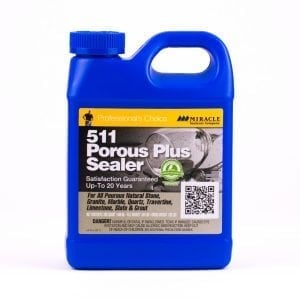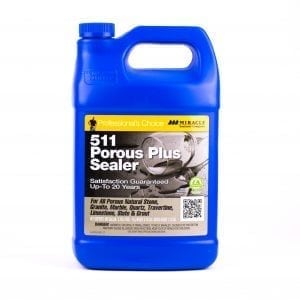TERRACOTTA INSTALLATION
Printable Installation instructions PDF
Where and how it’s Made
Our traditional red terracotta is handmade by tile artisans in Canada using locally sourced clay. From cutting the clay to packing the box, each tile is handled at least six times, ensuring the quality, consistency, and beauty of premium artisanal tile.
Where and how to use
- Interior floor: Yes
- Exterior floor: Yes
- Floor traffic: Heavy
- Commercial: Yes
- Radiant heat compatible: Yes
- Interior wall: Yes
- Exterior wall: Yes
- Fireplace surround: Yes
- Stove backsplash: Yes
- Sink backsplash: Yes
- Shower: Yes
- Steam shower: Yes
- UV resistant: Yes
- Freeze-thaw rated: No
- Pools: No
Grout Joint Size and Color
Grout joint size refers to the space in between each tile, with grout being the means by which these spaces are filled. A default grout thickness of 1/8” is recommended, however grout line thickness can dramatically alter the look of the final install. For grout joints 3/4” or larger, we recommend using a paver grout such as Mapei 2.5:1 Paver Grout.
Like joint thickness, there is flexibility in the grout color selection. For the highest probability of satisfaction, have your contractor complete the tile installation and then use a grout color chart to make the appropriate selection. It is important to note that time of day and lighting will impact how the tile/grout pairing looks.
Riad Tile Tile recommends using a high-quality grout such as Mapei Flexcolor CQ or Custom Prism
Installation
Before you Begin
Proper installation of your handmade terracotta tile is only possible by a qualified and experienced installer with years of experience setting artisanal tile. This product is not a DIY. Due to the handmade craftsmanship of terracotta tiles, there will be various degrees of variation in surface texture, color, shade, and size across production batches. You may see flashing, ghosting, or firing marks on the tile, or possibly small white deposits on the surface of the tiles. This is normal and is to be expected from small batch handmade tiles. As such, your sample may not be an identical twin with your actual order. And add-on orders will undoubtedly be from a different lot and may not be a perfect match to your original order.
Inspecting your Shipment
Terracotta tiles are fragile. Depending on the method and number of times handled, they are susceptible to scratching, chipping and cracking. During shipping, there is always a chance that a small percentage of the tiles will be damaged.
- Visible Damage: It is your responsibility as the consignee to note any visible damage on all copies of the proof of delivery or on the driver’s hand-held and request an Additional Services Form from the driver noting the damage. Take multiple photos of the damage before the skid is unpacked. Notify Riad Tile of the damage immediately by emailing hello@earthsmithtile.com. Include a description of the damage as well as photos.
- Concealed Damage: Must be reported within 24 hours of delivery. Keep all packaging material and notify Riad Tile of damage immediately by emailing hello@riadtile.com. Include a description of the damage as well as photos.
Store your tiles in a dry area. Do not let the boxes get wet.
General Installation Guidelines
Due to the handmade craftsmanship of Riad Tile terracotta tiles, there will be various degrees of variation in surface texture, color, shade, and size.
Due to the inherent variations in this product, it is important to blend the tiles from all the boxes of your order. Ensure you are satisfied with the distribution by performing a full dry fit. Prior to installing, clean any dirt and dust from the tile surface using a soft cloth and a pH neutral cleaner. Allow dry time before installing.
What you’ll need
- Bucket
- Sponge
- 1/2″ notched trowel
- High quality medium bed thin set mortar such as ProLite Premium Large Format Tile Mortar
- 1/8” (or other) tile spacers
- Grout float
- Custom Prism Ultimate Performance cement grout
- Wet saw with a diamond blade appropriate for tile
- Foam roller and tray
- pH neutral cleaner such
- Lint-free microfiber cloth
- Premium impregnating sealer: Stain-Proof Color Enhancing Sealer or Stain-Proof Premium
- Impregnating sealer.
Setting Terracotta Tile
Artisanal terracotta tile is NOT a DIY project and Riad Tile recommends a professional tile installer with extensive experience with similar handmade tile installations. The guidelines below are intended to provide support to the installer and to maximize the success of the installation. If at any point prior to installation you are unsure of anything about your order, or if you have questions about the tile you are installing, please contact Riad Tile for support.
If cuts are required, be sure to thoroughly wash all tiles immediately after cutting with a wet saw to avoid cutting paste stains.
For floor installations, install your tile over a suitable, stable, and fully cured surface with a sub floor membrane or substrate. Your installation may require a decoupling membrane such as Schluter Systems Ditra (or equivalent) to prevent issues after installation.
For wall installations, only apply to suitable, even, and stable surfaces. Never apply directly to a painted surface. Install using appropriate setting materials that will not allow the tile to slip/sag or use grout
spacers to keep grout spacing consistent.
Riad Tile recommends using a rapid-setting mortar such as Custom ProLite Premium Large Format Tile Mortar, or equivalent. Follow the adhesive manufacturer’s instructions as directed. Using a margin trowel, be sure to cover the entire back surface of the tile with mortar or adhesive. Spread the mortar on the install surface with a notch trowel. Ensure that when set, all tiles are level, and that no lippage is present. Do not use a hammer or mallet to set the tiles – only use hand pressure. Immediately wipe off any residual thin set from the surface of the tiles as thin set can be challenging to remove without damaging the tile if left too long.
Allow a full 48 hours for the thin set to cure prior to sealing.
Pre-Grout Sealing
Prior to sealing, clean any dirt and dust from the tile surface using a soft cloth and a pH neutral cleaner.
Allow dry time before sealing.
The end color of the tile can be altered in this step of the installation. To retain the color of the tiles as they are in the box, a non-enhancing sealer such as Stain-Proof Premium Impregnating Sealer, should be used.
To provide a deeper and darker color, an enhancing sealer such as Stain-Proof Color Enhancing Sealer, should be used. Be sure to perform a test prior to sealing the entire tile surface. Multiple applications will deepen the color and should be tested as such.
Apply the impregnating sealer as per the manufacturer’s direction. For the best results, apply product in even thin coats. Uneven application may cause an undesired finish.
Allow sealer to cure as per the manufacturer’s recommendations – typically 24 hours or greater.
Grouting
It is possible that the selected grout may haze or stain the tile surface, even after sealing. Be sure to perform a small area test. If this occurs, alter the grout specification, or utilize a grout bag. Be sure that tile surface and joints are free from debris prior to grouting. Do not use any tapes or masking adhesives on the sealed tile when grouting as these may stain the tile. Work in small areas, making sure that all the grout joints have been filled and wiping away excess as you go. Using a damp grouting sponge, wipe tile in a gentle, circular motion to remove excess grout and ensure a smooth consistent grout line.
Wipe tile with pH neutral cleaner and a damp microfiber cloth to buff away all residual grout from the surface of the tile. Use each side of the cloth only once, rinsing often.
Allow the grout to cure as per the manufacturer’s recommendations – usually 24 hours or greater.
Post-Grout Sealing
Prior to sealing, clean any dirt and dust from the tile surface using a soft cloth and a pH neutral cleaner.
Allow dry time before final sealing.
Apply the impregnating sealer as per the manufacturer’s direction. For the best results, apply product in even thin coats. Uneven application may cause an undesired finish.
Maintenance: General Care
Terracotta tile “wears” like a natural stone product and patina will arise over time in higher use or heavy traffic areas.
Properly installed and sealed terracotta requires little maintenance beyond regular cleaning. Below are a few tips to help keep your tile looking beautiful for years to come.
Keep your tile surface free from dirt to keep abrasive particles from scratching the tile surface. Wipe up all spills immediately. Allowing fluids to remain on the tile surface for an extended period can cause staining.
Only use a mild soap or pH neutral cleaner, and a damp cloth or mop. Never use harsh chemicals or abrasives.
Re-Sealing
Terracotta tile can be re-sealed as often as deemed necessary



